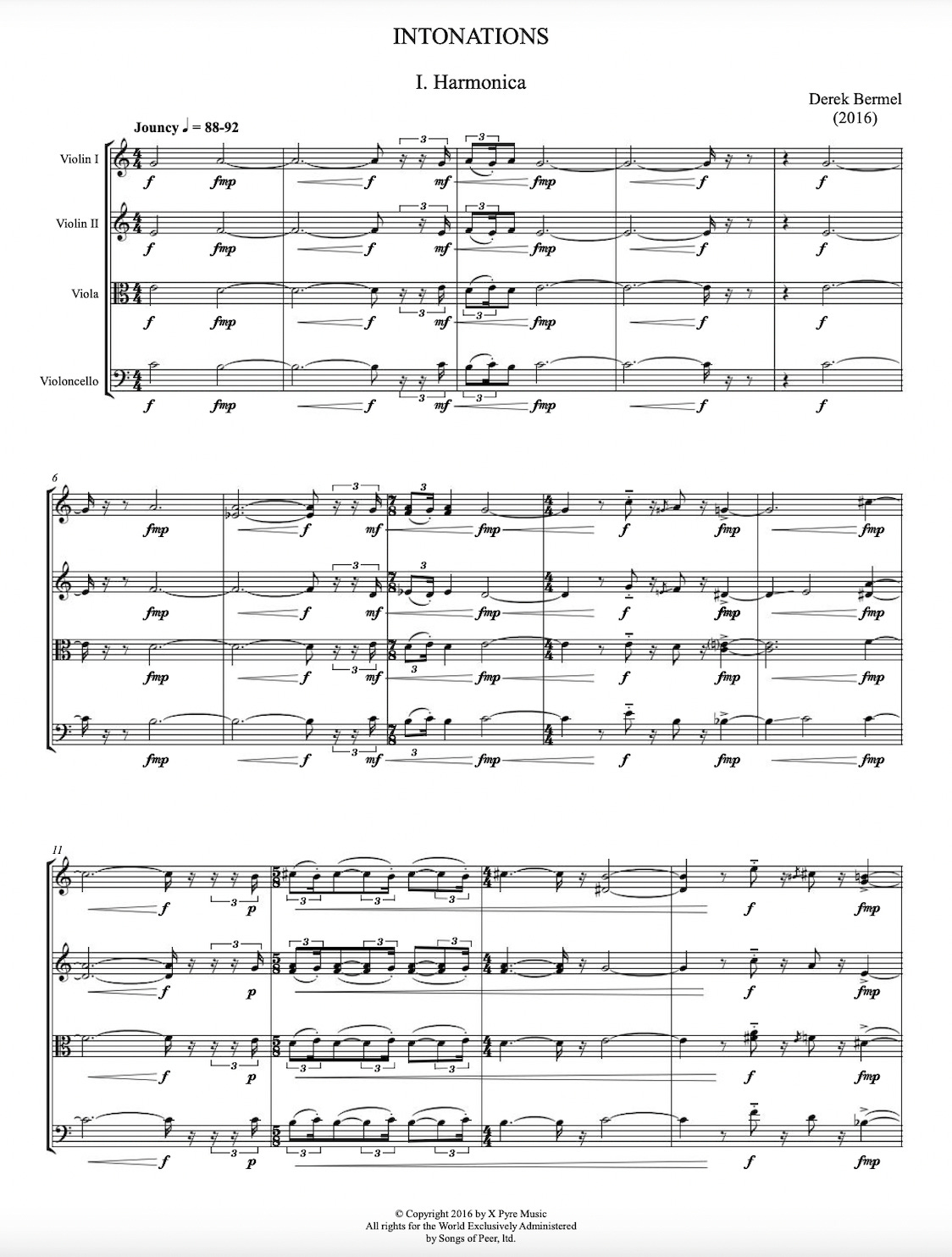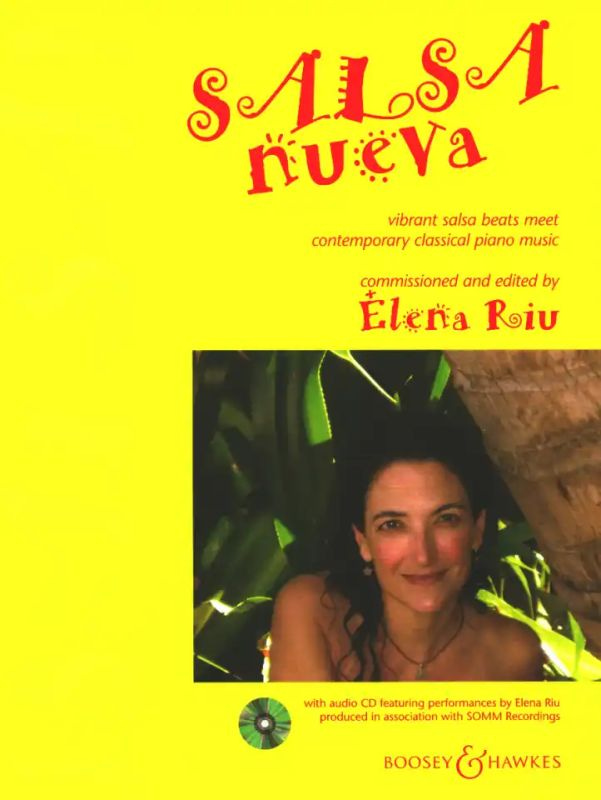Critics roll out the word “vernacular” to describe rhythmic/bluesy appropriations in American concert music. A representative sentence to stand in for a century’s worth of program notes: “George Gershwin and Aaron Copland helped create the American symphonic sound when they drew on vernacular sources.”
That American Gershwin/Copland symphonic sound influenced composers worldwide, but it didn’t stay in the forefront of the discourse after World War II. For a time, the high modernism of Elliott Carter and Milton Babbitt ruled the roost of American composition. Not too many people actually liked listening to that style (my own choice was Charles Wuorinen), so they were abruptly replaced in the 1970s by the minimalism of Philip Glass and Steve Reich. Glass and Reich have marvelous qualities, but the long tail of their influence has resulted in a lot of bland contemporary composition that sounds closer to Radiohead than anything else.
Good news: In recent years, there has been a return to some of that old-school Gershwin/Copland-style appropriation, but updated to the new and now. Yes! These fresh records of Derek Bermel and Tania León are exactly the sort of thing I’m looking for.
Derek Bermel’s Intonations is a string quartet in three movements played by the JACK Quartet.
I. Harmonica
II. Hymn/Homily
III. Hustle
Bermel explains:
"Intonations" is my first multi-movement quartet, inspired in part by the novel "The Invisible Man" by Ralph Ellison. Each movement explores a distinct quality of the human voice, from the breath of harmonica blues to a gospel singer's melodic thread to vocal cadences in hiphop. It has been a great joy to collaborate with the JACK Quartet for several years, both as performer and composer.
Taking on Ellison, the blues, and hip-hop is a big ask. Thanks to fantastic compositional control and heaps of good humor, Bermel pulls it off. It is all too easy for such an endeavor to collapse under the weight too much earnest sincerity, but Bermel is more interested in wit than gravitas. Starting the work with an amateur breathing in and out on a mouth-harp is a masterstroke.
The brilliant JACK Quartet treats the bluesy microtones and the hip-hop syncopations with appropriately rough or sophisticated elegance. Are we at the dawn of a new age of performance practice? The score can be seen at issuu.
The rest of the CD covers a lot of lovely ground as Bermel interfaces with prog rock guitar (Ritornello), the violin etude tradition, and a clarinet feature for himself, Thracian Sketches. For me, the other highlight is A Short History of the Universe (as Related by Nima Arkani-Hamed), where Bermel’s clarinet soars in concert with the JACK Quartet. Again, the musical references seem quite American, and — despite all the machinations of time and space implied by the title — a sense of joy abounds. (This score is also at issuu.)
Tania León unashamedly drops a huge dollop of Cuban rhythmic know-how into the contemporary concert scene.
A video of Jade Simmons playing León’s Tumbáo is one of the best things on YouTube; I concluded my overview of 20th-century notated piano music with a link to León/Simmons and the comment: “For the first time on this page, the word syncopated is insufficient: One must use the word clave, especially when discussing the performance by Jade Simmons.”
Tumbáo is dedicated to the famous singer Celia Cruz and was published in the valuable 2005 anthology Salsa Nueva by Elena Riu.
(For the jazz cats: Kenny Kirkland’s surprising salsa rendition of Bud Powell’s “Celia” on his only album as a leader is also a tribute to Celia Cruz.)
The new overview Teclas de mi Piano played by Adam Kent is a handy introduction to the world of Tania León. I endorse Seth Colter Walls’s review in the New York Times.
Walls says that “The album’s sequencing keeps you on your toes.” I’d go a little further and suggest that the program order does not serve the music well, especially in an era when most are streaming the music without accompanying metadata. Even the well-written booklet notes by Jason Stanyek discard chronology in favor of discursive anecdotes.
Here is the order of music on the record, plus dates and brief explanations. (Thanks also to Esteban Meneses and his helpful I Care If You Listen review.)
1 Homenatge (2011) The dedication reads, “for Adam Kent in homage to Montsalvatge,” meaning Xavier Montsalvatge, a composer obscure outside of Catalonia. The piano writing is fancy, but it is also stop and start. A design common to many larger León pieces is the slow assembling of momentum. It works — when the habanera finally shows up at three minutes it is simply heartbreaking — and of course the composer is allowed to do whatever they must, but I still think that…
2 Tumbáo (2004) …is the perfect introduction to León. You can’t miss the genius on display here. Kent plays it great.
3 Momentum (1984) Gorgeous atonal blues, with a plucked note inside the piano frame as a reference point. I’m thinking about Earl “Fatha” Hines as I’m listening...
4 Rondó a la Criolla (student work from mid-’60s) Sounds like a 6/8 festive dance from someone like de Falla but with an infusion of Thelonious Monk.
5 Rituál (1987) León has done a lot with dance, for a long time she was in residence with the Dance Theatre of Harlem. Rituál is dedicated to the company’s co-founders, Arthur Mitchell and Karel Shook. It’s a virtuoso work, full of fire, exhibiting seriously impressive piano writing. The whole CD is a great calling card for the talents of Adam Tent.
6 Homenaje a Prokofiew (student work from mid-’60s) Amusing little waltz.
7 Mística (2003) One of León’s champions has been Ursula Oppens. When Oppens had a recital in Havana on Mother’s Day, Leon sent her mother (in attendance in the Havana concert) a long-distance Mother’s Day present: the premiere of Mística. (Deep waters, for this is arguably the most recondite music on Teclas de mi Piano.)
8 Prelude No. 1 "Sorpresa" (student work from mid-’60s) Both short preludes are charming, and again recall Prokofiev.
9 Prelude No. 2 "Pecera" (student work from mid-’60s)
10 going...gone (2012) Commissioned for Anthony De Mare’s Stephen Sondheim project Liaisons; the basis is the song “Good Thing Going,” from Sondheim’s Merrily We Roll Along. Leon says, “I took some of Sondheim’s harmonies and transfigured the whole song. It opens like a jazz improvisation and it closes the same way. This is an American sound for me. But in the middle there is a lot of me going everywhere. It’s me taking a tour over here, going over there. That’s why I call it ‘going...gone.’”
11 Variación (2006) The Aria from Bach’s Goldberg Variations is refracted into a pointillistic, neoclassic fantasy.
Teclas de mi Piano offers a substantial amount of music to digest. As with Bermel’s collection Intonations above, I’m just at the beginning of my journey appreciating these rich texts. As of now, I declare León’s Tumbáo, Rituál, and Momentum to be truly winning pieces that should be programmed by concert pianists everywhere. (If I had been in charge of production I would have led off the sequence with those three, in that order.)
Like everyone else, I’m impatient for an official release of León’s prize-winning orchestral piece Stride. But from what can be heard online, the work exhibits command of both vernacular and formal music traditions in the true American manner.








